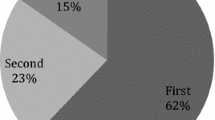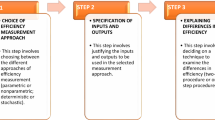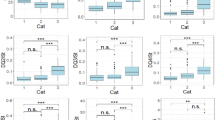Abstract
Evaluating and quantifying the scientific output of a researcher is a complex problem that may not benefit from standardized or uniformly accepted solutions. Over the past few decades, various indices, including the most popular h-index, have been introduced for assessing the output and quality of research publications. The uniform application of a single index to researchers with varying age, tenure, gender, economies, funding opportunities, nature of tasks performed, etc., can introduce significant bias, eventually leading to inappropriate assessment results for promotion and tenure. Further, no indices explicitly account for the time spent on teaching-related tasks, advising students for their projects not necessarily resulting in publications, and administration work leading to a situation that favors colleagues who are focused only on research. A new metric, called GG-index, for internal use by institutions of higher education, is proposed to evaluate researchers who have spent a minimum of five continuous years at the academic/research institution. This GG-index is calculated from the h-index, the logarithm of the scientific tenure, citations/paper over the recent 5-year period, and a correction factor that considers the relative dedication to research and the researcher’s field. A survey was conducted of some top researchers in various fields, and their publication parameters and responses are used to illustrate the robustness and characteristics of the GG-index. We further demonstrate how the GG-index complements the h-index and helps mitigate the bias against researchers with long-term breaks for maternity, childcare, and other personal reasons. Further, young researchers with good recent publication impact (reflected by high citations per paper) and those working in fields with low citations would also be benefited. It is, however, to be noted that the GG index strongly relies on data available with the institutions, thus making it suitable for the internal assessment of faculty/researchers.








Similar content being viewed by others
References
Bollen, J., Van de Sompel, H., Hagberg, A., & Chute, R. (2009). A principal component analysis of 39 scientific impact measures. PLoS ONE, 4(6), e6022.
Bornmann, L., & Daniel, H. D. (2009). The state of h index research: Is the h index the ideal way to measure research performance? EMBO Reports, 10(1), 2–6.
Czarnecki, L., Kaźmierkowski, M., & Rogalski, A. (2013). Doing Hirsch proud; shaping H-index in engineering sciences. Bulletin of the Polish Academy of Sciences Technical Sciences, 61(1), 5–21.
De Groote, S. L., & Dorsch, J. L. (2003). Measuring use patterns of online journals and databases. Journal of the Medical Library Association, 91(2), 231.
Egghe, L. (2006). Theory and practise of the g-index. Scientometrics, 69(1), 131–152.
Garfield, E. (2005). The agony and the ecstasy—The history and meaning of the journal impact factor. Journal of Biological Chemistry, 295, 1–22.
Glänzel, W. (2006). On the h-index—A mathematical approach to a new measure of publication activity and citation impact. Scientometrics, 67(2), 315–321.
Greenwood, D. C. (2007). Reliability of journal impact factor rankings. BMC Medical Research Methodology, 7(1), 1–6.
Hirsch, J. E. (2005). An index to quantify an individual’s scientific research output. Proceedings of the National Academy of Sciences, 102(46), 16569–16572.
Iglesias, J., & Pecharromán, C. (2007). Scaling the h-index for different scientific ISI fields. Scientometrics, 73(3), 303–320.
Imperial, J., & Rodríguez-Navarro, A. (2007). Usefulness of Hirsch’s h-index to evaluate scientific research in Spain. Scientometrics, 71(2), 271–282.
Ioannidis, J. P., Klavans, R., & Boyack, K. W. (2016). Multiple citation indicators and their composite across scientific disciplines. PLoS Biology, 14(7), e1002501.
Ioannidis, J. P., Baas, J., Klavans, R., & Boyack, K. W. (2019). A standardized citation metrics author database annotated for scientific field. PLoS Biology, 17(8), e3000384.
Jin, B., Liang, L., Rousseau, R., & Egghe, L. (2007). The R-and AR-indices: Complementing the h-index. Chinese Science Bulletin, 52(6), 855–863.
Mitra, P. (2006). Hirsch-type indices for ranking institutions scientific research output. Current Science, 91(11), 1439.
Prathap, G., & Gupta, B. (2009). Ranking of Indian universities for their research output and quality using a new performance index. Current Science, 97(6), 751–752.
Radicchi, F., & Castellano, C. (2012). A reverse engineering approach to the suppression of citation biases reveals universal properties of citation distributions. PLoS ONE, 7(3), e33833.
Raghuraman, K., Chander, R., & Madras, G. (2010). Scientometric analysis of some disciplines: Comparison of Indian institutions with other international institutions. Current Science, 99, 577–587.
Rossner, M., Van Epps, H., & Hill, E. (2008). Show me the data. Rockefeller University Press.
Satyanarayana, K., & Sharma, A. (2008). Impact factor: Time to move on. Indian Journal of Medical Research, 127(1), 4–7.
Schreiber, M. (2008). A modification of the h-index: The hm-index accounts for multi-authored manuscripts. Journal of Informetrics, 2(3), 211–216.
Seglen, P. O. (1997). Why the impact factor of journals should not be used for evaluating research. BMJ, 314(7079), 497.
Simko, I. (2015). Analysis of bibliometric indicators to determine citation bias. Palgrave Communications, 1(1), 1–9.
University Grants Commission of India. Notification; No. F. 1–2/2009 (EC/PS) V(i) Vol.-II. Retrieved May 12, 2022, from https://www.ugc.ac.in/pdfnews/8377302_English.pdf
Acknowledgements
The authors gratefully appreciate the contributions of all the researchers who agreed to participate in the survey, without whose contributions and willingness the definition of the index would not have been possible. We acknowledge various bibliometric portals, which have been used to collect publication-related data for the various researchers. Dr. Stefie J. Stephen has generously helped systematically arrange the data, compute the various indices for different researchers and perform important calculations. The authors are also thankful to Prof. Koshy Varghese for the initial discussion and valuable suggestions, and to the IJS group of colleagues for fruitful discussions and constant encouragement. Authors are grateful to two anonymous referees for their valuable suggestions and comments during the review process.
Funding
The authors received no specific funding for this work.
Author information
Authors and Affiliations
Contributions
RG and SSG conceived the idea and designed the research. SSG carried out the data analysis of the survey with help from RG. RG and SSG interpreted the results and performed further analysis. RG wrote the first draft of the manuscript with equal contribution from SSG in the several subsequent iterations.
Corresponding author
Ethics declarations
Conflict of interest
Authors declare no conflict of interest.
Supplementary Information
Below is the link to the electronic supplementary material.
Rights and permissions
About this article
Cite this article
Gunthe, S.S., Gettu, R. A new index for assessing faculty research performance in higher educational institutions of emerging economies such as India. Scientometrics 127, 4959–4976 (2022). https://doi.org/10.1007/s11192-022-04460-0
Received:
Accepted:
Published:
Issue Date:
DOI: https://doi.org/10.1007/s11192-022-04460-0




